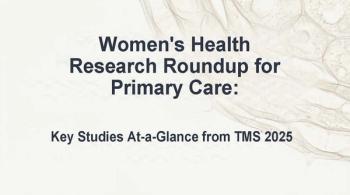
What’s That Dose Again?
Patients' descriptions of their medications can cause confusion-with potentially dangerous results.
Patients' descriptions of their medications can cause confusion-with potentially dangerous results. For example, a patient may say she is "on 160 mg" of an antihypertensive when, in fact, she takes two 80-mg tablets per day. The health care professional may call in that medication as 160 mg, and the patient is then likely to take 2 of these 160-mg pills per day. Thus, she will be receiving 320 mg/d, not 160 mg/d.
The bottom line: always speak about medications in milligrams per pill and number of pills per day.
Newsletter
Enhance your clinical practice with the Patient Care newsletter, offering the latest evidence-based guidelines, diagnostic insights, and treatment strategies for primary care physicians.













































































































































































































































































